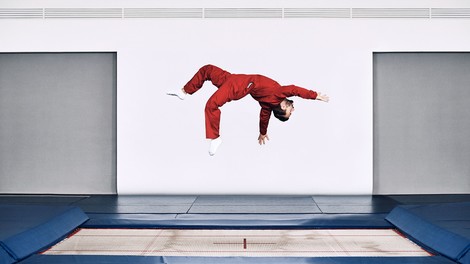Your podcast discovery platform
Curious minds select the most fascinating podcasts from around the world. Discover hand-piqd audio recommendations on your favorite topics.

piqer for: Global finds Health and Sanity Doing Good
Bangalore-based Rashmi Vasudeva's journalism has appeared in many Indian and international publications over the past decade. A features writer with over nine years of experience heading a health and fitness supplement in a mainstream Indian newspaper, her niche areas include health, wellness, fitness, food, nutrition and Indian classical Arts.
Her articles have appeared in various publications including Mint-Wall Street Journal, The Hindu, Deccan Herald (mainstream South Indian newspaper), Smart Life (Health magazine from the Malayala Manorama Group of publications), YourStory (India's media technology platform for entrepreneurs), Avantika (a noir arts and theatre magazine), ZDF (a German public broadcasting company) and others.
In 2006, she was awarded the British Print-Chevening scholarship to pursue a short-term course in new-age journalism at the University of Westminster, U.K. With a double Masters in Globalisation and Media Studies from Aarhus Universitet (Denmark), University of Amsterdam and Swansea University in Wales, U.K., she has also dabbled in academics, travel writing and socio-cultural studies. Mother to a frisky toddler, she hums 'wheels on the bus' while working and keeps a beady eye on the aforementioned toddler's antics.
Falls Are Great Perils To Life And Limb; So Why Are We Not Learning How To Fall Better?
I laugh uproariously when people fall. I also laugh when my toddler takes a tumble. And of course, I laugh when I fall, which I do more frequently than I care to admit.
That's partly the reason I found this story so fascinating.
On a more sombre note, I read this story amidst all the horrifying tales coming out of the Grenfell Tower tragedy. Perhaps because I spent a night imagining the trauma of the mother who threw her child out of the 10th floor and reliving the stories of people jumping out of burning homes, this erudite article resonated deeply.
Falls, as the author rightly says, are one of the greatest dangers to life. Each year, over 420,000 people die worldwide after falling. Falls as a cause of injury are even more significant. Like he says, to be shot by a gun or die by an accident, you need to be near a gun or in a vehicle. But you can fall anywhere. And the dangerous falls are not always from great heights or towers; often they are in bathrooms, or in supermarkets or just from the stairs in your patio.
It is only recently that scientists are trying to understand how and why people fall and how to lessen the damage from falls. Scientists are now working out how one can “fall better” and be trained to accept falls as an "inevitability to be prepared for".
The article goes on to discuss these recent researches with thrilling examples of real people who have survived great falls and delves into how advances in technology are now being used to "plot falls into a computer for study" to diagnose issues such as balance, vision and gait. One important point the author makes is about how walking is automatic but balance is more cognitive and achieved after information is processed. This itself can be a reason for falls, particularly among people with physical or cognitive disabilities. The last section lists out how we could cushion falls and mitigate injuries.
An accompanying piece on famous real-life and literary figures who fell is an interesting read too.
